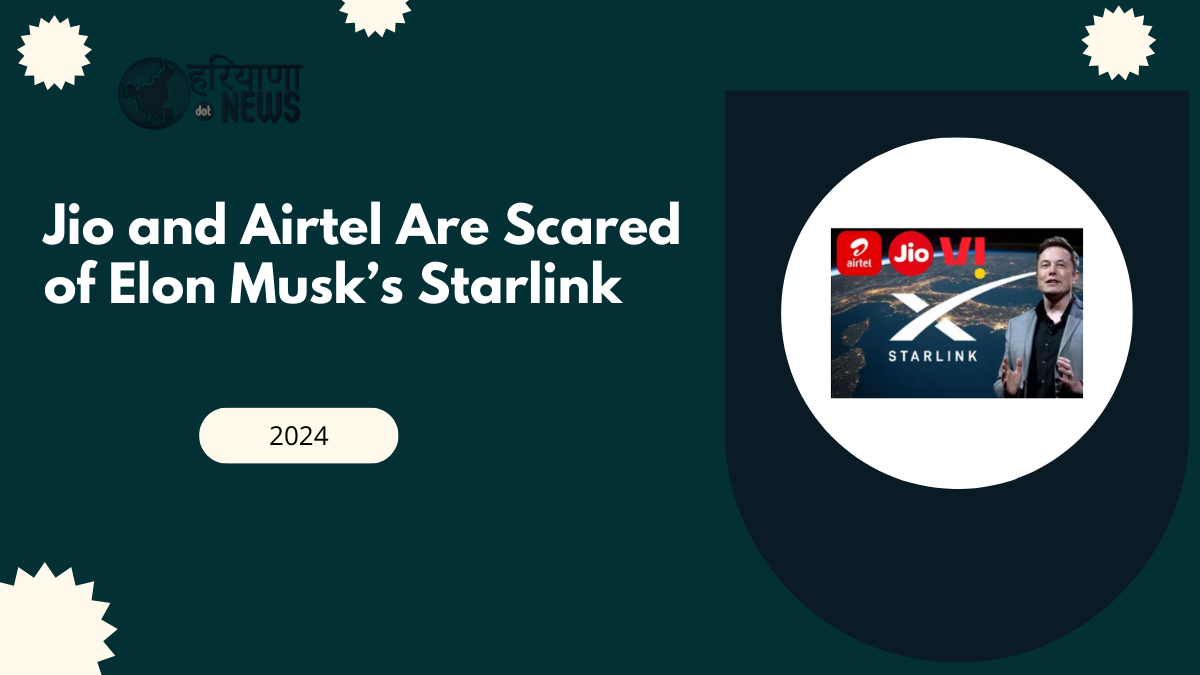Elon Musk’s Starlink, a satellite-based internet service provided by SpaceX, is shaking up the global broadband industry. In India, telecom giants like Jio and Airtel are particularly concerned about the potential impact Starlink could have on their market dominance. With the promise of high-speed internet delivered directly via satellites, Starlink poses a new challenge to traditional telecom providers that rely on terrestrial infrastructure like fiber optic cables and mobile towers.
Jio and Airtel Are Scared of Elon Musk’s Starlink
Here’s a closer look at why Jio and Airtel are apprehensive about the arrival of Starlink in India.
1. Starlink’s Ability to Reach Remote and Rural Areas
India’s rural population, which makes up about 65% of the total, has long suffered from poor internet connectivity. Despite Jio and Airtel’s efforts to expand their networks, many remote areas still lack reliable, high-speed broadband. Rolling out fiber optic cables and maintaining mobile towers in these regions is both expensive and logistically challenging.
This is where Starlink’s satellite-based service has a distinct advantage. Instead of relying on ground-based infrastructure, Starlink uses a network of low-earth orbit (LEO) satellites to provide internet access. This enables Starlink to offer fast and reliable connectivity even in the most inaccessible locations. For Jio and Airtel, this poses a serious threat. If Starlink becomes the go-to option for rural internet, it could cut deeply into their market share, especially as they have been investing heavily in rural expansion.
2. Potential for Competitive Pricing
Currently, Starlink’s pricing is higher compared to what Jio and Airtel offer for broadband services. In India, where price sensitivity is high, affordability plays a critical role in the success of internet services. However, Starlink’s long-term strategy suggests that the pricing could become more competitive as the company scales up and more satellites are deployed.
Once Starlink achieves larger-scale operations and possibly benefits from economies of scale, it might be able to offer its services at prices that could compete directly with Jio and Airtel. While these telecom companies rely on bundled packages that combine mobile data, broadband, and other services to retain customers, a highly competitive, reliable satellite internet service like Starlink could force them to reconsider their pricing models and offerings.
3. Technological Superiority of Satellite Internet
Starlink’s technology offers several key advantages over traditional broadband and 4G/5G networks. Its low-earth orbit satellites are designed to minimize latency, which means faster response times for online activities like video conferencing, streaming, and gaming. While fiber-optic connections provide high-speed internet, the infrastructure needed for widespread fiber deployment is costly and time-consuming to build, especially in rural or geographically difficult areas.
Moreover, traditional telecom companies, including Jio and Airtel, face challenges with network congestion, infrastructure maintenance, and upgrading their systems to support next-gen technologies like 5G. Starlink, on the other hand, can upgrade and expand its satellite network more flexibly without needing to physically upgrade on-the-ground infrastructure.
This technological advantage is a cause for concern among traditional telecom providers. As consumers, especially in urban areas, start to demand higher speeds and lower latency for streaming, online gaming, and work-from-home setups, Starlink could become an attractive alternative.
 Mumbai Police Detain Woman for Threatening Call on Prime Minister Modi’s Life
Mumbai Police Detain Woman for Threatening Call on Prime Minister Modi’s Life
 Hemant Soren was sworn in as the Chief Minister of Jharkhand for the fourth time, took oath as Jharkhand’s 14th chief minister
Hemant Soren was sworn in as the Chief Minister of Jharkhand for the fourth time, took oath as Jharkhand’s 14th chief minister
 India’s Strategic Breakthrough: Advancing SLBM Capabilities with INS Arighaat
India’s Strategic Breakthrough: Advancing SLBM Capabilities with INS Arighaat
 Chinmoy Das Arrest: High Court Petition Seeks Ban on ISKCON Amid Rising Violence Against Hindus in Bangladesh
Chinmoy Das Arrest: High Court Petition Seeks Ban on ISKCON Amid Rising Violence Against Hindus in Bangladesh
 Bangladesh Police Use Tear Gas and Batons Against Hindu Protesters After Chinmoy Das’ Arrest
Bangladesh Police Use Tear Gas and Batons Against Hindu Protesters After Chinmoy Das’ Arrest





4. Disruption of the Telecom Duopoly
India’s telecom sector is currently dominated by a few major players, with Jio and Airtel controlling a large part of the market. This duopoly has allowed them to set prices, dictate service standards, and control the pace of innovation to some extent. However, Starlink’s entry into the Indian market could disrupt this balance.
As a global satellite internet provider, Starlink has the potential to introduce a completely new kind of competition, one that doesn’t rely on local infrastructure or spectrum licenses to operate. The lack of reliance on physical infrastructure means that Starlink could scale more quickly and with fewer regulatory hurdles compared to traditional telecom operators. This makes Jio and Airtel nervous, as they could lose their control over both urban and rural markets if Starlink captures a significant share of internet subscribers.
5. Regulatory and Operational Challenges for Starlink
While Starlink’s potential to disrupt the Indian telecom market is clear, it’s not without challenges. India has strict regulations regarding satellite communication, spectrum allocation, and the operation of foreign companies in the telecommunications sector. Jio and Airtel may leverage their influence with regulatory bodies to slow down or complicate Starlink’s entry into the market.
However, if Starlink manages to navigate these regulatory hurdles and secure the necessary approvals, it could be a major player in India’s broadband landscape. The question for Jio and Airtel is whether they can innovate fast enough to retain their market leadership or risk being overtaken by this new, disruptive technology.
Conclusion
The fear that Jio and Airtel have of Elon Musk’s Starlink is rooted in the potential for massive disruption to the current telecom landscape in India. With its ability to deliver high-speed internet to remote areas, its potential for competitive pricing, and its superior satellite technology, Starlink represents a formidable challenge to the traditional models of internet service delivery. If Starlink successfully enters the Indian market, Jio and Airtel will have to innovate rapidly and reconsider their strategies to maintain their dominance.
In a country as large and diverse as India, the arrival of satellite internet could radically alter how people connect to the web, especially in areas that have long been underserved by traditional telecom infrastructure. The coming years will be crucial as Jio, Airtel, and Starlink vie for control of this rapidly evolving space.
Click here to learn more about the latest updates.






